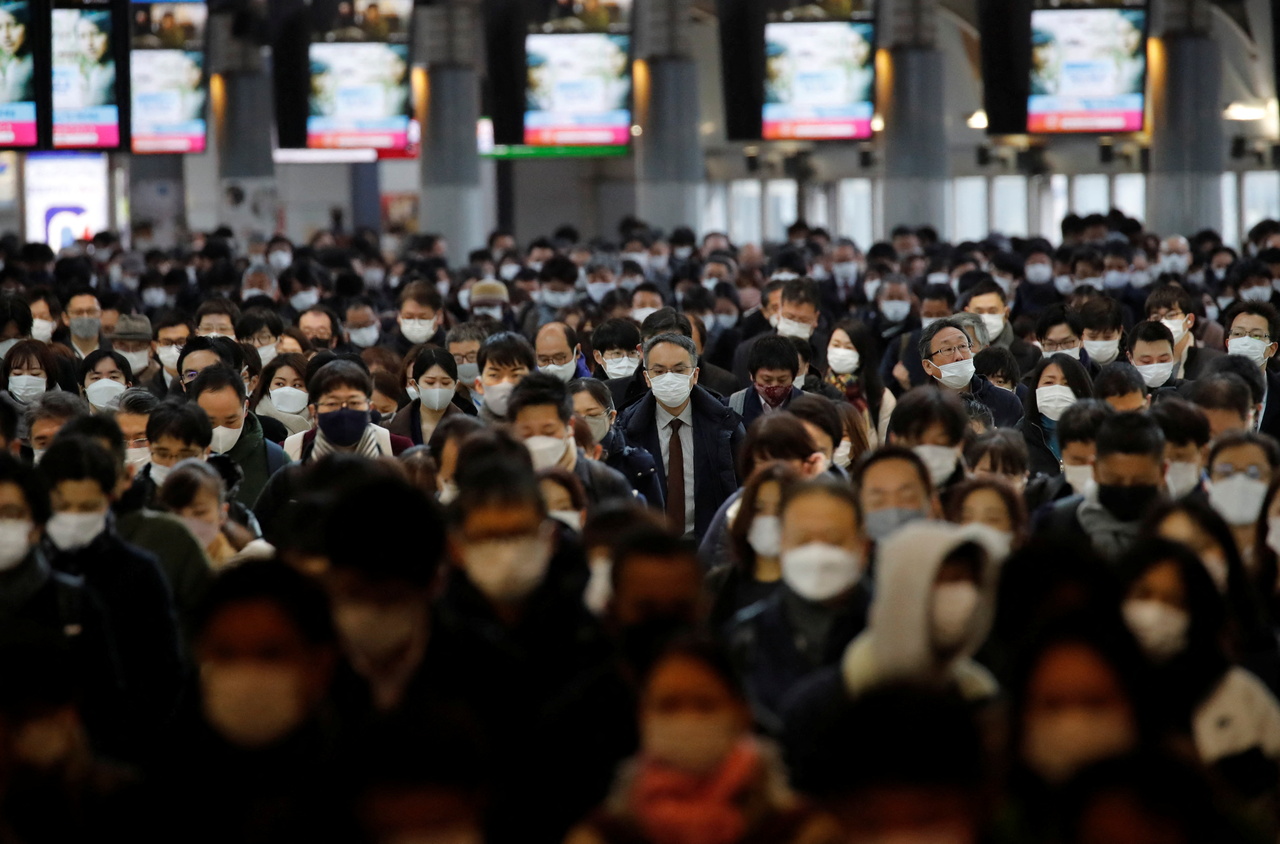Curbs extended in Japan as Covid-19 surges; daily tally tops 40,000 for first time
Sign up now: Get insights on Asia's fast-moving developments

New daily highs were recorded in 28 out of the country's 47 prefectures.
PHOTO: REUTERS
Follow topic:
TOKYO - Daily Covid-19 records were smashed across Japan on Wednesday (Jan 19), including in Tokyo and Osaka, and Prime Minister Fumio Kishida placed 13 prefectures under quasi-emergency curbs for three weeks starting Friday.
The country logged 41,485 cases on Wednesday in a new record that came just a day after it breached 30,000 cases for the first time with 32,197 infections. There were 281 patients in serious condition, and 15 deaths.
New daily highs were recorded in 28 out of the country's 47 prefectures.
The surging numbers and planned virus curbs hurt investor sentiment, with the Nikkei 225 index plunging 2.8 per cent to close at its lowest level since Aug 20, 2021, when a state of emergency was in effect across wide areas.
The 13 prefectures, including Tokyo and its neighbouring regions, will come under a state of quasi-emergency from Friday until Feb 13.
They join Okinawa, Hiroshima and Yamaguchi, which are already under a state of quasi-emergency from last Sunday to Jan 31 after a spike in cases involving the Omicron variant of the coronavirus that was tied to lax regulations at United States military bases.
"We are fighting against an unknown but with sufficient preparation and without being overly afraid, we will overcome this situation," Mr Kishida said on Wednesday.
The government's top Covid-19 adviser Shigeru Omi said separately that combating the Omicron variant would require more targeted measures.
"There is no need to ask people to stay home, or to shut down businesses," Dr Omi said, adding that the key was to deter large gatherings in poorly-ventilated spaces.
Still, the rapid spread of Covid-19 - the case count on Wednesday was nearly 78 times the 534 reported on New Year's Day - has severely strained medical services.
The Fire and Disaster Management Agency listed a record 4,151 instances in which ambulances struggled to find a hospital for emergency patients in the week ending Jan 16. This was up 44 per cent from the previous week.
Addressing the strain, Japan Medical Association president Toshio Nakagawa said that the elderly and high-risk patients with underlying conditions would be given priority in Covid-19 treatment.
In Japan, a quasi-emergency will only be considered by the national government after a formal request is made by prefecture leaders, who also get broader powers to decide on the extent of curbs necessary.
This has given rise to a hotchpotch of benchmarks and rules across the country.
In Tokyo, where the case count was in the double-digits at the turn of the year, Wednesday's 7,377 new cases eclipsed the old high of 5,908 cases on Aug 13 last year.
Tokyo Governor Yuriko Koike sought the quasi-emergency on Monday after the hospital bed usage rate crossed its threshold of 20 per cent.
The figure was 25.9 per cent on Wednesday, while Ms Koike has said that a full-fledged state of emergency would be necessary if the usage rate tops 50 per cent.
But no quasi-emergency has yet been sought by Osaka, which on Wednesday set a new high of 6,101 cases, as its bed usage rate of 31.3 per cent was still under its threshold of 35 per cent.
Tokyo and its surrounding prefectures of Chiba, Kanagawa, Saitama and Gunma will come under the state of quasi-emergency from Friday, as will Niigata, Gifu, Aichi, Mie, Kagawa, Nagasaki, Kumamoto and Miyazaki.
Some prefectures, like Tokyo, are asking food-and-beverage businesses to stop alcohol service at 8pm and shut by 9pm. But others like Gifu and Saitama are seeking stricter rules in line with emergency measures last year, where dine-in alcohol service was barred, with eateries to shut by 8pm.
With the nationwide surge, more prefectures may be seeking a quasi-emergency within days including, reportedly, Hokkaido, Fukushima and Shimane.
New record highs were recorded in (from north-east to south-west):
Hokkaido (1,170 cases), Aomori (284), Niigata (440), Tochigi (316), Gunma (444), Ibaraki (393), Saitama (2,215), Tokyo (7,377), Nagano (382), Shizuoka (877), Ishikawa (176), Gifu (461), Aichi (2,881), Wakayama (269), Kyoto (1,202), Osaka (6,101), Hyogo (2,514), Tottori (92), Okayama (483), Shimane (174), Ehime (245), Yamaguchi (320), Fukuoka (2,208), Oita (270), Nagasaki (409), Kumamoto (711), Miyazaki (235) and Kagoshima (256).

